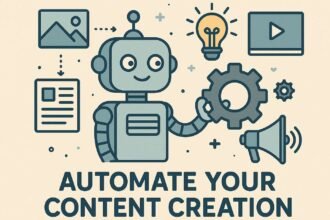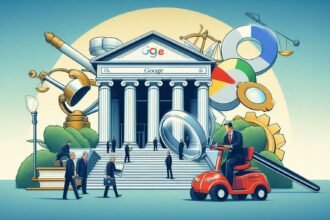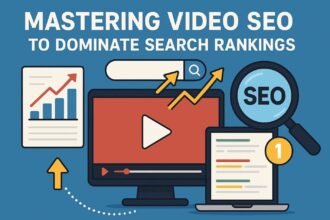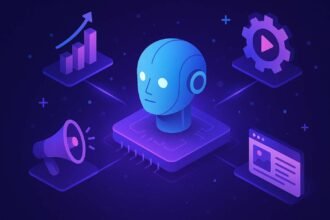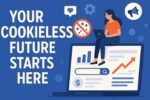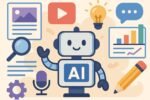Businesses have used the same flowchart of marketing roles for decades:
- A CMO in charge of the ship
- Content writers writing a lot of blogs
- SEO pros looking for keywords
- PPC managers changing bids
- Social media managers trying to get people to interact
- Analysts are buried in spreadsheets
That org chart used to make sense. What about today? It looks like an old thing.
Adding more people to the marketing team isn’t the way to go. It’s about replacing the whole structure that relies on people with one strong, self-sufficient system: AI.
This isn’t a slow change; it’s a takeover. AI is no longer just “helping” marketers. It’s turning into the marketing team.
Why the Old Way of Marketing Doesn’t Work
People-led marketing that is based on tradition is having trouble keeping up with the digital world. Here’s why:
Talking Silos
Content, SEO, ads, and social media don’t often work together. Each team has its own way of measuring success, which makes campaigns disjointed and customers confused.
Speed (or Lack of It)
Campaigns led by people move at the speed of meetings and approvals. The market may have already changed by the time a campaign starts.
Too Much Information, Not Enough Brainpower
Humans just can’t handle all of the data from websites, CRM systems, ad networks, and social signals. People make decisions based on gut feelings instead of real knowledge.
High Costs, Low Certainty
One of the most expensive things for any business is a fully staffed marketing team, and the return on investment (ROI) is not always good.
The AI Takeover: What Each Role Does
AI isn’t just nibbling at the edges; it’s eating whole roles. Let’s take it apart:
Old Role: CMO or Strategist
- People: Look into markets, make budgets, and come up with yearly plans
- AI: Takes in real-time market data, competitor spending, and past performance. Then it runs simulations to instantly suggest the most profitable ways to grow.
Old Role: Writers of Content
- People: Plan, write, edit, and post blogs, social media posts, and emails
- AI: Makes SEO-driven content calendars, drafts optimized blogs, comes up with different versions of captions, and writes full email sequences for each stage of the funnel.
Old Role: Experts in SEO and PPC
- People: Finding the right keywords, doing technical audits, changing bids, and improving campaigns
- AI: Tools constantly scan websites, fix problems with them, and run paid campaigns. Google’s Performance Max is already an AI-powered ad autopilot.
Old Role: People who manage social media
- People: Plan posts, respond to comments, and keep an eye on brand mentions
- AI: Scheduling tools choose the best times to post, and AI chatbots talk to customers all day, every day, giving them quick, accurate answers.
Old Role: Data Analysts
- People: Gather and clean data, run reports, and look for patterns
- AI: Combines data from different platforms, runs attribution modeling, and predicts which leads will convert weeks faster than any human team.
The New Job: The Marketing Operator
So does this mean that companies won’t have any people working in marketing? Not really.
Companies don’t need big teams anymore; they just need one or two Marketing Operators to run the AI engine.
Their jobs are very different from those of traditional marketers:
- Set the Goal: Set the tone of your brand, where it stands in the market, and who your customers are. These are the things that AI works on.
- Systems Integration: Choose and link AI platforms (like CRM, analytics, and ad automation) into a growth stack that works smoothly.
- Creative Oversight: Give AI the “big idea” spark—campaign stories, brand stories, and visual direction—and then improve what it comes up with.
- Prompt Mastery: Learn how to “speak machine.” Operators are prompt engineers who know how to get the best insights and campaigns out of AI.
Instead of thinking of the Operator as a marketer, think of them as the person who runs a self-driving marketing machine.
The Future: Systems, Not Groups
The writing is there:
- Teams led by people are slow, expensive, and not very effective.
- AI-led systems are quick, accurate, and can be used by many people.
This doesn’t mean that the future will be bad. This is the best chance we’ve had in a long time. A small business with a small team can now compete with and beat big companies with marketing departments of fifty people thanks to AI.
What Should CEOs and Founders Do?
- Stop hiring people for jobs like “Content Marketer” or “PPC Manager.”
- Put money into AI platforms that work together.
- Find the few operators who know how to use them.
The race is already on. The people with the smartest machines, not the biggest teams, will win.



